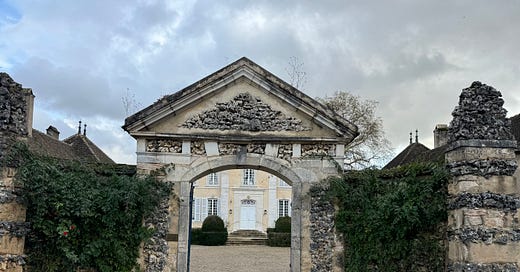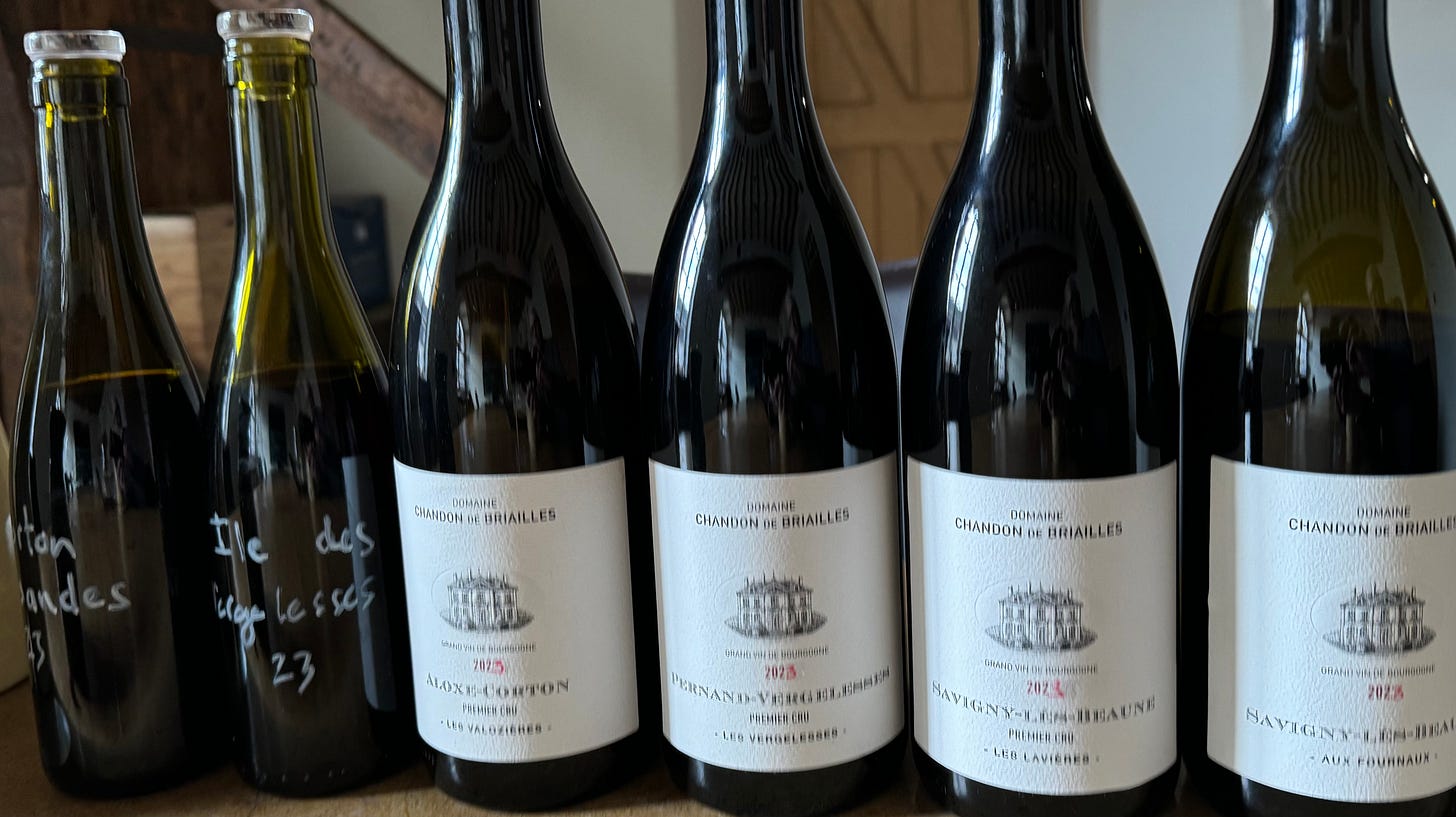Claude de Nicolay said that harvesting began on 30 August with the whites, and continued for three days. The picking then stopped, restarting again on 5 September for the reds reds, Vergelesses and Lavières were the last to finish, on 15 September. For the first time, the estate used a bit of sulfur after malolactic fermentation because many wines went through malo early, raising potential for problems such as volatile acidity and brettanomyces. As is standard here, the reds were entirely whole cluster. Yields for the estate averaged 38 hl/ha. There was no acidification or chaptalization.
Not all wines were available to taste the day I visited.
2023 Savigny-les-Beaune Aux Fourneaux
From bottle. In 2023, the wine includes grapes from vines planted in 2015; they were included for freshness and acidity and picked early; the remaining grapes, from vines planted in 1956, were picked on the last day of harvest. Balsamic nose. Balsamic, red fruits, smooth texture, balsamic notes begin to blow off with air. 87(+)/B
2023 Pernand-Vergelesses 1er Cru Les Vergelesses
From bottle. Earthy nose, light on palate, persistent, long, focused. From vines planted in 1962. 89+/B
2023 Savigny 1er Cru Les Lavières
From bottle. Lost roughly 10% of the crop due to figged berries. Pure, focused racy, dark fruits, mineral. 91/A-
2023 Aloxe-Corton 1er Cru Les Valozières
From bottle. Ripe full, round dark fruits, powerful, finesse to go with richness. 90/B+
2023 Pernand-Vergelesses 1er Cru Ile des Vergelesses
Floral nose. Elegant, herbal, round, elegant, (90-93)
2023 Corton-Bressandes
Typical Bressandes earthiness, ripe, rich, dark fruits, elegant. (92-94)
2023 Ile des Vergelesses blanc
Mineral nose. Mineral, focused, fresh, white fruits. (91-93)




